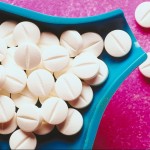 There’s a news feature in the New York Times today (“Drowned in a Stream of Prescriptions”) that focuses on the problem of addiction to ADHD medications. While the article deals mainly with college students and young adults who deceive mental health professionals into thinking they have ADHD so that they can receive these highly addictive drugs, this story underscores the fact that drugs like Ritalin, Adderall, and other psychostimulants, are highly addictive for ALL age levels (including young children) and should be prescribed only as a last resort after other non-drug alternatives have been tried. The article suggests that these drugs are often given out by physicians without appropriate screening and monitoring.
There’s a news feature in the New York Times today (“Drowned in a Stream of Prescriptions”) that focuses on the problem of addiction to ADHD medications. While the article deals mainly with college students and young adults who deceive mental health professionals into thinking they have ADHD so that they can receive these highly addictive drugs, this story underscores the fact that drugs like Ritalin, Adderall, and other psychostimulants, are highly addictive for ALL age levels (including young children) and should be prescribed only as a last resort after other non-drug alternatives have been tried. The article suggests that these drugs are often given out by physicians without appropriate screening and monitoring.
The fact is that there are quite a number of non-drug alternatives out there that should be considered before going into the risky world of addictive psychostimulants. In my book The Myth of the ADHD Child, I outlined 101 practical non-drug alternatives to ADD/ADHD. Here are 50 of them:
- Provide a balanced breakfast.
- Consider the Feingold diet
- Limit television and video games
- Teach self-talk skills.
- Find out what interests your child.
- Promote a strong physical education program in your child’s school.
- Enroll your child in a martial arts program.
- Discover your child’s multiple intelligences
- Use background music to focus and calm.
- Use color to highlight information.
- Teach your child to visualize.
- Remove allergens from the diet.
- Provide opportunities for physical movement.
- Enhance your child’s self-esteem.
- Find your child’s best times of alertness.
- Give instructions in attention-grabbing ways.
- Provide a variety of stimulating learning activities.
- Consider biofeedback training.
- Activate positive career aspirations.
- Teach your child physical-relaxation techniques.
- Use incidental learning to teach.
- Support full inclusion of your child in a regular classroom.
- Provide positive role models.
- Consider alternative schooling options.
- Channel creative energy into the arts.
- Provide hands-on activities
- Spend positive times together.
- Provide appropriate spaces for learning.
- Consider individual psychotherapy.
- Use touch to soothe and calm.
- Help your child with organizational skills.
- Help your child appreciate the value of personal effort.
- Take care of yourself.
- Teach your child focusing techniques.
- Provide immediate feedback.
- Provide your child with access to a computer.
- Consider family therapy.
- Teach problem-solving skills.
- Offer your child real-life tasks to do.
- Use “time-out” in a positive way.
- Help your child develop social skills.
- Contract with your child.
- Use effective communication skills.
- Give your child choices.
- Discover and treat the four types of misbehavior.
- Establish consistent rules, routines, and transitions.
- Hold family meetings.
- Have your child teach a younger child.
- Use natural and logical consequences.
- Hold a positive image of your child.
For details on using each of these strategies (plus 51 more) – see my post on 101 strategies, and get my book The Myth of the ADHD Child, Revised Edition: 101 Ways to Improve Your Child’s Behavior and Attention Span Without Drugs, Labels, or Coercion. Most of these strategies can also be adapted for use with adolescents and adults.
This article was brought to you by Thomas Armstrong, Ph.D. and www.institute4learning.com.
Follow me on Twitter: @Dr_Armstrong



















